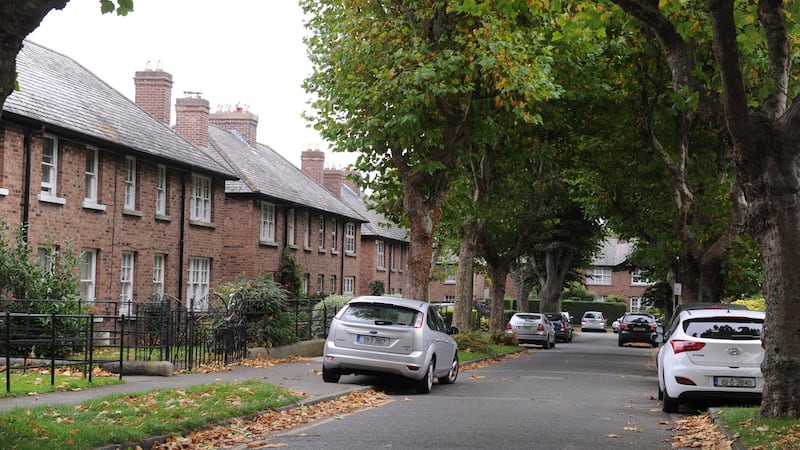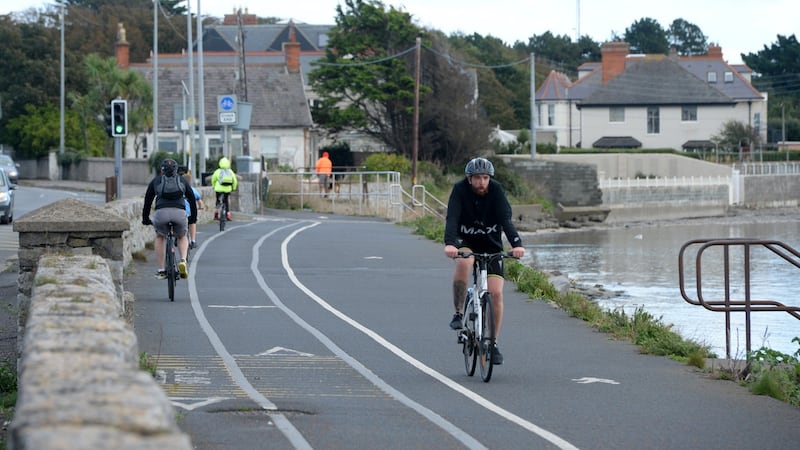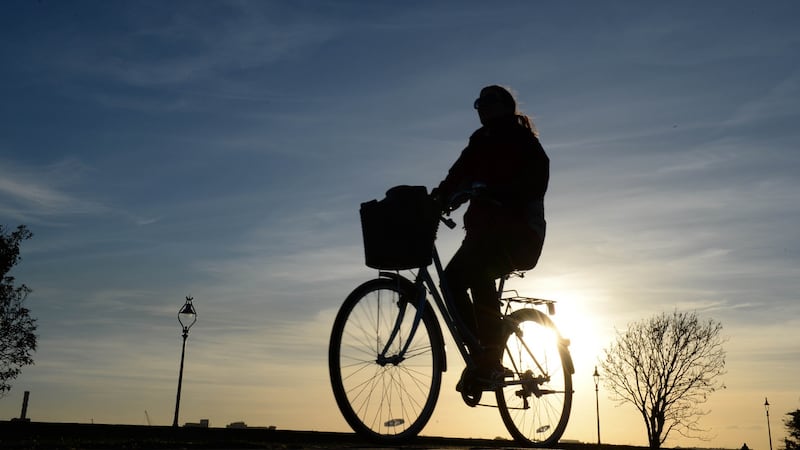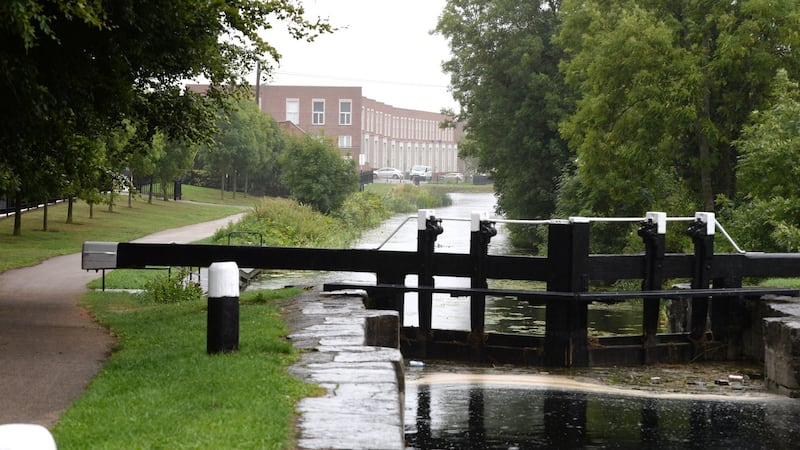Buying your first home this year? With public transport capacity now a fraction of pre-Covid days, how to get to work may prove a conundrum. Even if restrictions ease, the sardine crush on buses and trains, once the peak-time norm, will no longer appeal. For an affordable home with a healthy commute, it’s time to get on your bike.
In the wake of a pandemic, the development of cycling infrastructure is set to accelerate. Public transport capacity has been reduced to 50 per cent or less of normal levels, a social distancing measure likely to continue for some time. Authorities are having to act fast with existing and planned cycle routes starting to connect whole swathes of Dublin city.
For house hunters prepared to pedal, better cycle lanes could mean a lower mortgage with a predictable commute time, minimal travel costs and better health to boot
Under its Covid Mobility Programme, Dublin City Council in conjunction with the National Transport Authority has identified 14 routes into the city with the highest levels of walking and cycling.
To attract even more people to walk and cycle, its aim is to make these journeys safer, faster and more appealing than before. Once implemented, the measures will better connect some of Dublin’s most expensive but also some more affordable urban villages and suburbs to the city centre. For house hunters prepared to pedal, the result could be a lower mortgage with a predictable commute time, minimal travel costs and better health to boot.
South Dublin
Take Crumlin in Dublin 12, the south city suburb is closer to town than much of the expensive and highly sought after neighbouring Dublin 6. The area has surged in popularity with first-time buyers in recent years as prices (and the hipster quotient) in Dublin 8, just over the canal, have maxed out.
The downhill cycle from Crumlin will get you to the city centre in 15 to 20 minutes, according to Dublin Cycling Campaign estimates. Under the Covid Mobility Programme, cycle lanes protected from traffic are to run both directions from Crumlin Road, through Cork Street, Kevin Street all the way to St Stephen's Green. That should mean no more parked cars in the bike lane or handlebar clips from passing traffic. Cyclists seem to be already on to it.
“The amount of people cycling to viewings is increasing,” says Ross Forde of David Ross estate agents in the area. “We had a viewing last Saturday and we had about six bikes outside the house. That’s unusual.”
First-time buyers are attracted to the value in Crumlin’s two- and three-bed terraced homes, much of it former social housing stock that makes for ideal starter homes. You can get your foot in the door of a two- or three-bed terraced house from €280,000 or a two-bed apartment with communal bike storage from €230,000.
On the weekend, you can eat your fill of avocado toast in chi chi neighbouring suburbs for the amount you’ve saved on your new home.

“A bike unlocks cheaper neighbourhoods for you without adding to your commute time,” says Kieran Ryan from the Dublin Cycling Campaign.
Properties in Inchicore and Rialto discovered and done up by the first-time buyers of yore are now selling at a premium.
“I’m seeing that trend happening in Dublin 12 now,” says Forde. A two- or three-bed terraced house with potential to extend starts at €290,000. Where the work has been done, expect to pay €320,000 with a few going for up to €365,000.
“What we are finding is that it’s young professionals working in town, a lot of tech workers and of course young families who are moving in,” says Forde.
The area is also home to workers in the nearby hospitals of Crumlin Children’s Hospital, the Coombe and the new National Children’s Hospital being built at the St James’s Hospital site, a massive project set to bring more services to the area.
Add Drimnagh to your house hunt too. New protected cycle facilities are proposed for the stretch of the Grand Canal from Suir Road along Dolphin Road, Parnell Road to Harolds Cross Bridge. Pedal onward to Portobello and the existing Grand Canal Greenway brings cyclists all the way into the Docklands.
North Dublin
For those working north of the Liffey, in East Point Business Park or in the financial district along the North Quays, a home in affordable pockets along the Dublin Bay cycle path will make for a mostly flat commute with sea views. The existing route, which runs all the way from Sutton to Clontarf, will soon connect on to the city centre with works due to start early next year.
The connection will provide safe segregated facilities on what is one of the most heavily used routes for cyclists accessing the city centre. The new route will start at Alfie Byrne Road north of Fairview Park and continue on each side of the road past the Talbot Street Junction on Amiens Street and will use kerbs to protect cyclists from traffic.
In the interim, DCC’s Covid Mobility Programme proposes protected cycle facilities where space permits along the route, bringing cyclists more comfortably into the North Quays.

"In my opinion one of the best areas is Bayside where you can pick up a terraced house in the early €300,000s," says Graham Murray of Sherry FitzGerald. "If you are looking for something close to the city centre on the best cycle way, that's probably the best value point."
If a first-time buyer can opt for a house that can grow with them, that’s always the right advice, he says.
“That’s prime Bayside – a house that can grow when you’ve had your first child.”
Somewhere closer to the city like North Strand, where there is also value to be had, is more for those prioritising convenience to work and going out, he says.

Marino is also popular, though values there are higher. Number 8 Brien Avenue, a three-bed mid terrace with a generous garden recently went sale agreed at €395,000 after bidding from six parties, says Murray. "Price point wise, you might pick one up needing a good bit of work in the late €300,000s."
“That area of the city around Marino and Fairview is going to be one of the best places to cycle in about three years time, and it’s probably also going to be one of the best places to live because you are going to be about a 10 minute cycle to the city centre,” says Kieran Ryan.
Cabra too has long attracted buyers seeking value within cycling distance of the city centre. First-time buyers can find something from €290,000, says Murray. “You can walk to town from there.”
Alternatively, Cabra Road connects with Phibsborough Road where new protected cycle facilities are proposed on the route down to the north quays for a more comfortable spin into town.
West Dublin
“We are expecting a huge increase in people cycling and, in fairness to Dublin City Council, they have rolled out a lot of temporary protective cycling infrastructure over the last couple of months,” says Ryan. These include bollards along the north quays, a heavily trafficked cycle route for those coming through the Phoenix Park from western suburbs like Castleknock or Blanchardstown.

Out west too is Ashtown. Stretching from just outside the gates of the Phoenix Park, the area has seen an influx of young couples and families, attracted by decent houses where prices averaging €312,000 are not as eye-watering as those in nearby areas.
Cyclists can come through the Park or along the Royal Canal Greenway. Once completed, improvement works there, planned before the pandemic, will provide a high quality walking and cycling route of over 7km linking Ashtown to the North Quays at the Samuel Beckett Bridge.
Support for cycling
The pandemic has seen a fresh surge in bike sales as citizens hemmed in by restrictions sought new forms of exercise. Reawakened to the joys of travelling under their own steam, many may be willing to eschew public transport, even if they could get a seat, for fresh air.
With a recession brewing too, commuters may do what they did during the last one, ditching expensive motor, public transport and gym membership costs for a bike. By 2016, the number of people cycling to work had increased by 43 per cent since 2011, according to CSO figures. The Bike to Work scheme, initiated when the Green Party was last in government, played a major role in this shift.
In a further alignment of stars, a new Green-tinged Programme for Government will see spending of €180 million annually on cycling for the lifetime of the Government. That includes new separated cycle routes; increased allowances for e-bikes and cargo bikes, and supports to increase the number of children cycling to school.
“What’s going to be revolutionary is the electric bike or e-bike,” says Ryan. Fitted with a small electric motor capable of speeds of 25km per hour, they take some but not all of the work out of cycling. Bike commutes from outer suburbs, once the preserve of triathletes in training, will become more normalised.
The cycling facilities as proposed under the Covid Mobility Plan are to be implemented on a phased and temporary basis, to respond to the “urgent and immediate needs of the city”. But why waste a good crisis? Supporting households in a faster, cleaner, cheaper, healthier commute seems like the smart route.













